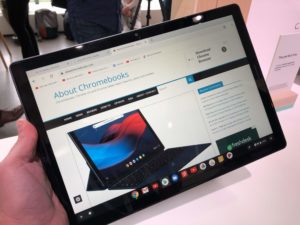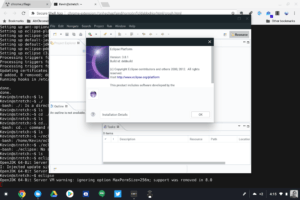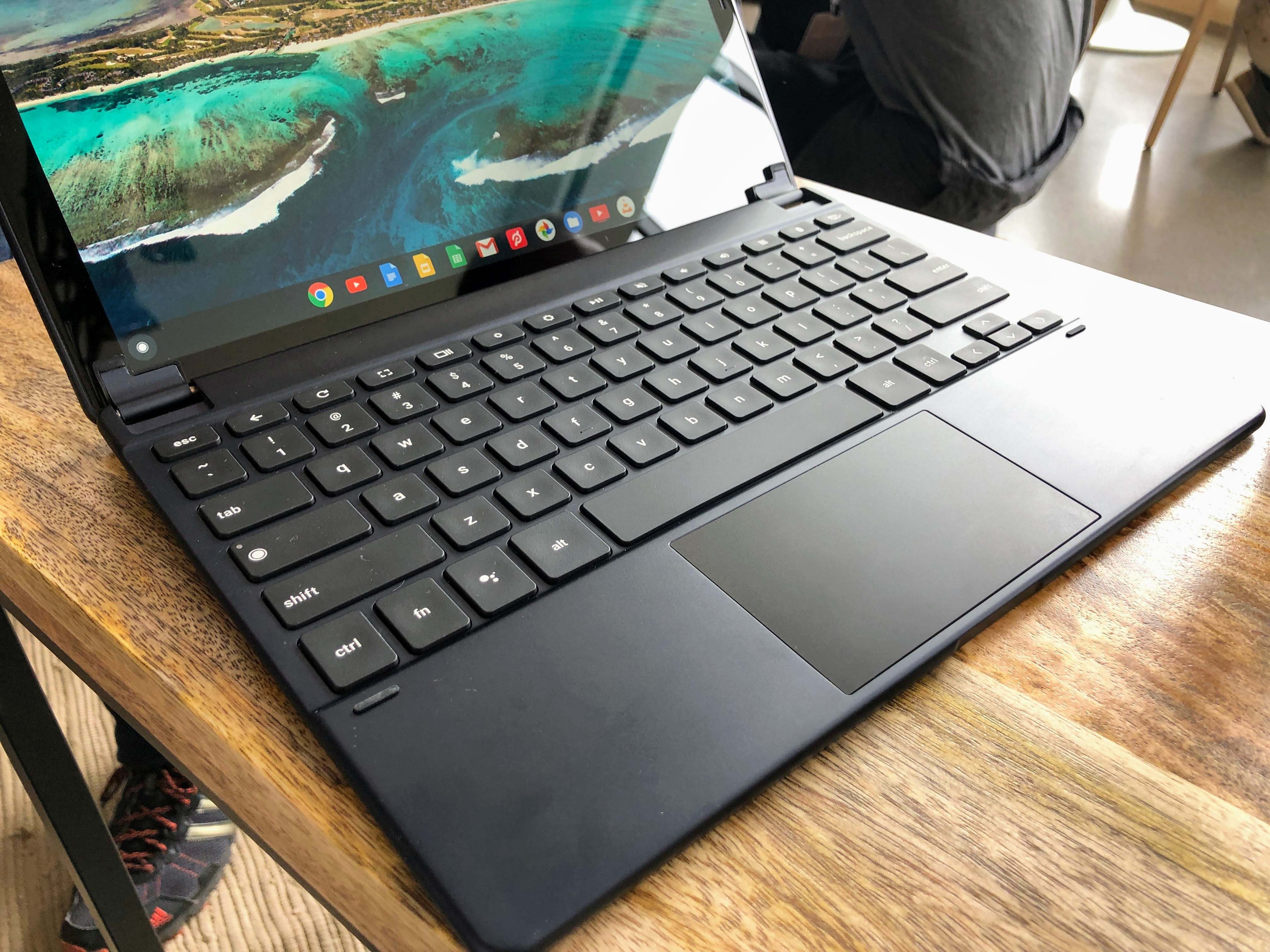Last week, I suggested that if you’re considering the purchase of a Google Pixel Slate, there are two questions you should ask yourself. The answers should determine if the Pixel Slate is a potentially good device choice, based on your usage patterns and your mobility requirements. This week, I’m turning my attention to step two: Assuming the Pixel Slate will fit your needs, which of the five configurations should you buy?
Yes, I did say that you have five choices, even though there are only four different processor choices. Note that the Pixel Slate configurations have two options if you go the Intel Celeron route. That chip paired with 4GB of memory and 32GB of storage costs $599 while you can double both the RAM and storage capacity with the $699 model, even though that price doesn’t appear in the options.
Just the basics please: $599 or $699
Is there a market for Celeron options? I’d say yes but those are going to be a tough sell. Why? Because this is entry level performance for the most part and you can get entry-level performance for under $300. Put another way: You really want the tablet form factor if you’re going to spend $600 for a Pixel Slate without a keyboard.
 If that sounds like you this might be a good option, provided you’re not the kind of person that keeps more than a dozen Chrome tabs open at a time. And you’re not big into running Android apps yet on a Chrome OS device.
If that sounds like you this might be a good option, provided you’re not the kind of person that keeps more than a dozen Chrome tabs open at a time. And you’re not big into running Android apps yet on a Chrome OS device.
Sure, the Pixel Slate with a Celeron will handle most Android apps just fine. However, I find that once you start using Android apps on a regular basis, it’s easy to start installing more and more of them.
In either case, I’d strongly consider spending the extra $100 for the Celeron-powered Pixel Slate with 8GB of RAM and 64GB of storage. You can’t add these later so this configuration will provide headroom to support more simultaneously open tabs or Android apps, plus the extra storage to hold those Android apps.
I’m a power user on a budget: $799
With the Intel Core m3, you might be surprised to see me discuss it and the phrase “power user” together. But hear me out. For two weeks, I switched from the base $999 Pixelbook to a $599 HP Chromebook X2. The Pixelbook has a 7th-gen Intel Core i5 processor and 8GB of memory while the X2 had a 7th-gen Core m3 and 4GB of memory. Nearly every activity I did on the X2 performed just as well as it did on the Pixelbook. Even benchmark tests — just a general indicator of performance, of course — were extremely similar.
As a result, I think there’s a solid chance that the $799 Pixel Slate configuration will be a top seller amongst the choices. I expect it to provide surprisingly good performance for most people. Someone who has used Chromebooks for some time and often keeps 20 open tabs on their device should be happy at this price point.
Are you often running Android apps instead of their web counterparts during the day? This should work fine as well. And, if you’re curious about or want to dabble with Linux, you should be able to do that as well with this model. Most Android games should be fine at this price point too. although if you favor more graphically intensive titles, the next model up has a slightly better-integrated graphics package. Update: The m3, i5 and i7 for the Pixel Slate actually all have the same Intel UHD Graphics 615 capabilities, so upgrading from an m3 won’t gain any better graphics performance.
I probably wouldn’t buy this model if you’re going to run Linux apps all day side-by-side with Chrome OS, however. You likely can do that with the Core m3 but I think you’ll push against hardware performance limits from time to time; the slightly higher performing Core i5 might be a good hedge against that. And you might need more local storage which also comes with that model.
I love Linux and/or I’m a developer: $999 or $1599
I’m lumping in the last two configurations together because the use cases that fit these are only marginally different. The $999 and $1,599 options aren’t needed for most mainstream Chrome OS users. Instead, I think they’re geared more towards those who want to take full advantage of Linux containers and for those who are app developers.
 For casual devs like myself — I’m currently enrolled in a Software Engineering Certificate program at my local community college — the $999 option ought to do. I’m not currently writing applications with a massive code base, for example. I have some Python scripts that work with some of my IoT devices and I’m going through Java basics. I can turn the latter into Android apps in the future.
For casual devs like myself — I’m currently enrolled in a Software Engineering Certificate program at my local community college — the $999 option ought to do. I’m not currently writing applications with a massive code base, for example. I have some Python scripts that work with some of my IoT devices and I’m going through Java basics. I can turn the latter into Android apps in the future.
Android Studio and other IDEs run well enough for my meager development needs on the current Pixelbook. It has the same internal configuration as the Core i5 Pixel Slate with one difference: The Pixel Slate has a next-generation processor, so I expect a small performance bump.
Developers that create code for a living might be able to get by with the $999 Pixel Slate, but of course, will also have to consider the $1,599 option. That will provide more of a “no compromise” development machine that should handle most, if not all, situations. It’s overkill for me, but I know plenty of coders who go all out and crave the best performance possible.
Don’t forget the extras!
Obviously, the Pixel Slate price is simply that: The cost of the Pixel Slate. Most people will want a keyboard unless they plan to use the device more for web content consumption, Android apps and light typing, so factor in another $159 for the Brydge G-Type or $199 for the Google Pixel Slate Keyboard.

Having briefly used both, I don’t think you can go wrong with either choice. I’m leaning towards the Google option personally as I’d rather take advantage of the Pixel Slate’s pogo pins over the Bluetooth connection of the Brydge choice. But again: Both seemed solid for typing and swiping on the trackpad during a brief hands on.
There’s also the $99 pen for the Pixel Slate. If you need it, you need it: I can’t make that choice for you. I can tell you, however, that the original Pixelbook pen does work with the Pixel Slate. So if you’re trading up from a Pixelbook to the Pixel Slate, keep your pen!
Updated on November 13: Correction to reflect that the Core m3, i5, i7 models all have the same GPU capabilities.


16 Comments
Do we know yet if the Pixel Slate will be able to dual boot Windows 10? If so, would I be better off going with the Core i7 and 16GB of RAM? I don’t plan on using the Windows 10 all that often… Unfortunately, as a Network Engineer / Director of IT there are some applications that will only run under Windows.
Good question. I considered putting Windows 10 dual booting into the post but then decided against it because currently, the feature is only being developed on Eve, aka: The Pixelbook. Do I think the Pixel Slate will get this feature? Yes. But until we know for sure, I didn’t want to speculate as part of the decision process. I have a Surface Pro (last year’s model) with the Core i5 and 8GB of memory. It runs Windows 10 quite well for my use cases which are actually the same as my Pixelbook with some additions: Browsing / content creation, video consumption, video editing and audio/video podcasting. I think the $999 Pixel Slate would be more than adaquate for general Windows 10 usage as a result, if the feature is added.
Intel Celeron for better or worse has a had rap? Why would I want to buy a Chromebook at these prices powered by one? Not likely!
Next year, about this time, other companies will likely sell variants of the Pixel Slate, and those variants will offer greater value. Google employees and Chromebook enthusiasts who don’t really care about the price will no doubt acquire Slates and thoroughly enjoy them. But the Slate is more of a high functioning prototype that HP, Asus, Acer, Samsung, and Lenovo will look to as inspiration for new-product development. Still, the Slate seems to be a reasonably good first attempt at providing a viable alternative to the iPad Pro and Surface Pro.
Thanks for the post. Been listening to you a lot on TWIT too. Looking forward to listening to an About Chromebooks podcast someday! Anyway, do you expect a price drop for the Pixelbook when Slate is released? Although the Slate is a compelling product, I really don’t use a tablet much. A 2-in-1 would work better for me. What do you expect?
I wouldn’t be surprised to see the Pixelbook price continue to see random price drops; I’ve seen the base $999 model for around $750 every few weeks or so. Not sure Google would drop the price of the Pixelbook in tandem with the Pixel Slate release though: If they want to sell the Slate, dropping the price of a similar product might hurt initial sales. I’m sure Google would be happy to sell its own hardware, either way, but we’ll see!
Great write up. I’m glad someone is doing this to educate people not in the know rather than calling everything under an i5 weak. Most tech reviewers don’t understand they don’t represent the average user.
I do want to say that the y-series from Intel is really a great deception. The performance bump from core m3- i7 is minimal. For instance if you look at the 7th gen 7y30, benchmarks have it a bit better than the prior gen i5 and close to the 6th gen i7. I have seen no indication that the 8th gen changes this. I wish Intel would just go back and call them all core m series so it stops deceiving people thinking they are getting a current gen 4 core i5.
Buying ARM powered Cheza $399.
I think you’ll have to add at least five to the first number in that price. ?
I’m pretty sure all the processors i3-i7 in the slate have the same integrated graphics. So I think you’re wrong on this.
There isn’t a Core i3 model but there is a Core m3. That uses Intel UHD Graphics 615. The Core i5 and i7 models use Intel UHD Graphics 620.
Can you provide proof of the different gpus because i think you’re incorrect.
Adam, I went back and double checked: You’re correct! The Intel Y-series chips tested with the Pixel Slate on Geekbench all do have the Intel Graphics 615 UHD integration; I must have looked at the U-Series for the i5 and i7, which are unlikely CPU candidates. I’ll correct the post an update. Thanks for keeping me honest!
Love your article. I have the Toshiba CB 2 that does all I need. But the Tablet form factor is something I’m lacking. I know you mentioned that the Power User on the budget (Core m3) should work just fine. Although I don’t write code now I would like to some day. But I do make music on my CB currently and a better processor would make sense to me. Plus with Apps like Power Director and Adobe Rush video making will be more appealing on Chromebooks. Do you still think and m3 can do the job or does the i5 or even the i7 make a better choice?
To back up your feeling that the m3 is the ‘mass market’ option:
On MadebyGoogle announcement day, I signed up on the Google Store for updates on the Slate. When the email came last night announcing that pre-orders had began, the subject line was:
“The wait is over – Google Pixel Slate (8th Gen Intel® Core™ m3 Processor 8GB RAM 64GB Storage) Blue is here, in limited quantities”
And the only text in the email, along with the ‘Buy Now’ button, was:
“Ready for your Google Pixel Slate (8th Gen Intel® Core™ m3 Processor 8GB RAM 64GB Storage) Blue?”
I had been considering blowing 1k on an ipad to get a better photo format than on my ipod 10 s.
What is the photo capability of a chromepad? Will it lock into the Verizon network so that I can use it almost anywhere?